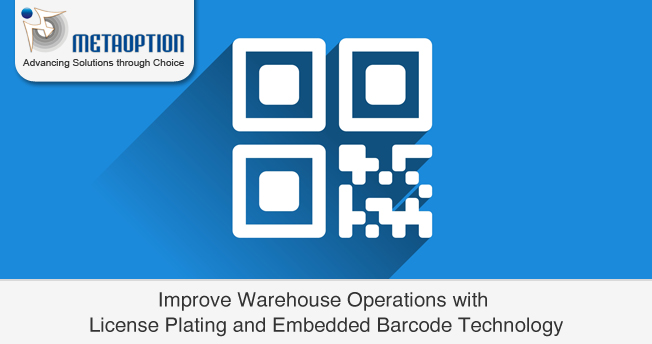While investing in a warehouse management system, it’s important to have a clear picture of what you’re trying to accomplish. When you have a clear vision of what you want to accomplish with your WMS, it’s easier to customize an ERP solution that works for your warehouse operations and your customers.

License plate is simply an additional form of unique identification to mark a pallet or some grouping of products or materials. It’s used to rapidly move the group of products from one location to another without having to scan the individual contents of that group. This method of optimizing information eases the strain of warehouse hardships so that manufacturers are able to track and access critical data with the simple scan of a barcode.
Whereas, barcoding for warehouse management is an effective, inexpensive, and user-friendly business application, which enables you to track a variety of data, from pricing to inventory. These combine to provide real-time efficiency in the hands of warehouse staff, which will boost productivity and precision
Let’s take a look at how License Plating works in the MetaWMS – Advanced Warehouse Management Solution which seamlessly integrates with Dynamics 365 Business Central.
How can License Plating help your Warehouse Operations?
License plate numbers (LPN’s) distinguish each item for better lot management and traceability, and it also reduces the number of scans required to enter while transaction. Mainly, the purpose of license plating in the warehouse is to keep track of inventory by grouping and managing all of the items and pallets via License Plate Numbers (LPN’s) throughout the warehouse process. More specifically, license plating can help your businesses be more efficient in multiple ways, including:
- Receiving shipments faster by letting you enter license plate information ahead of time.
- Monitoring inventory items by license plate to detect any problems and proactively fix them.
- Identifying popular warehouse items to make sure routes for those items are fast and efficient.
- Tracking items in a pallet and ensuring everything is in the right place where it should be.
- Speeding up overall warehouse operations by minimizing manual data entry.
Role of Barcodes in Warehouse Operations?
Productivity in a warehouse requires moving bulk containers and individual products smoothly through several unique steps. Using spreadsheets and manual data entry to perform counts of inventory and other activities can cause errors and stop staff from responding to changes quickly. Warehouse barcode labels allow you to tag each warehouse location, rack, and pallet, and container with a label that can be easily scanned at any time. It’s useful to carry out semi-automated cycle counts and moving inventory between departments or locations.
Additionally, automated scanning, barcodes provide a couple of unique benefits that are important for warehouse operations.
- Faster order processing speed
- Reduced clerical and operating costs
- Fewer errors
- Greater inventory and cycle count accuracy
- Excellent scalability for future expansions
- A professional and organized layout of the warehouse
Type of Barcodes in a Warehouse
There are a number of different 1D barcode encoding schemes which are basically using warehouse operations. Most of them include numbers only, while other barcodes include letters and punctuation.
- UPC-A: Standard UPC, encodes 12 numeric characters.
- Code 39: The most popular non-UPC barcode. It helps to encode numbers, letters, and punctuation.
- USPS IMB: Intelligent Mail Barcode is a proprietary, variable-length alphanumeric code used by the United States Postal Service for sorting and routing mail.
Whereas, 2D barcodes have the features that help aim the scanner. Therefore, these barcodes are also known as matrix barcodes. It includes the following:
- QR Code: The most common type of 2D barcode, QR code is often used to open a website or an app when scanned with a mobile phone. QR code is a matrix and can contain over 7,000 characters.
- Data Matrix: Similar in appearance to QR codes, a data matrix is often used to mark small electronic parts, it’s a matrix code that can contain about 2,300 characters.
- Aztec: It is mainly used for transit tickets. It’s a matrix code that contains approx 3,800 characters.
- GS1 Databar: This is a stacked variation of EAS used when there is limited space for a barcode to be printed. It can contain 14 characters called RSS-14.
You can start managing your warehouse operations with our MetaWMS – Advanced Warehouse Management Solution. For more information and a tailored demonstration contact us today at MetaOption LLC.


